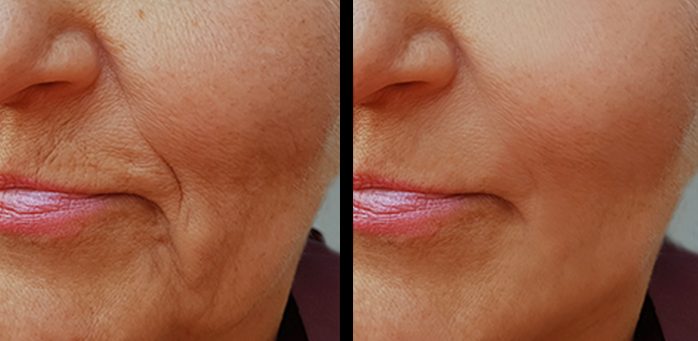
Introduction
In recent years, fillers have become increasingly popular as a non-surgical cosmetic treatment for restoring lost volume, reducing wrinkles, and enhancing facial features. Injectable fillers give the skin a more youthful and radiant look, resembling gel. In this article, we will explore the benefits of fillers, how they work, and what to expect from the procedure.
What are Fillers?
Fillers are a non-surgical cosmetic treatment that injects a gel-like substance into the skin to restore lost volume and reduce the appearance of fine lines, wrinkles, and folds. The gel-like substance is typically made up of hyaluronic acid, a natural substance found in the body that helps to keep the skin hydrated and plump.
How do Fillers Work?
Fillers work by filling in the gaps between the skin cells, which can result in a more youthful and radiant appearance. The gel-like substance is injected into the skin using a fine needle, which can be done in minutes. Patients can continue their regular activities following the surgery, which is painless.
The Benefits of Fillers
Fillers offer several benefits for those looking to improve their skin’s appearance, including:
- Restores Volume and Plumpness: Our skin loses volume and flexibility with age, giving us a sagging or hollow look. Fillers can aid in regaining lost volume, giving your skin a plumper and younger-looking appearance. Fillers can add volume to the cheeks, temples, and jawline, among other parts of the face.
- Lessens the Appearance of Wrinkles and Fine Lines: Fillers can also aid in lessening wrinkles and fine lines, notably those around the mouth, nose, and eyes. By filling in these areas, fillers can give your skin a smoother and more even appearance. Fillers can treat various wrinkles, including frown lines, smile lines, and crow’s feet.
- Enhances Facial Features: Fillers can also enhance certain facial features, such as the lips, cheeks, and chin. By adding volume to these areas, fillers can help you achieve the desired look you’ve been wanting. Furthermore, fillers can be utilized to define the jawline and enhance the face’s overall shape.
- Quick and Convenient Treatment: Unlike surgical procedures, fillers are a quick and convenient treatment that can be done in minutes. Even better, make your appointment around your lunch hour, and following the treatment, go back to work. After the treatment, there is no requirement for recovery or downtime.
- Long-Lasting Results: Even though fillers are not permanent, the effects might last anywhere from a few months to a year. This implies you can benefit from your fresh, young, and brilliant appearance for a while. It is advised to have further treatments to keep the effects.
The Procedure
The region to be treated will be cleansed and numbed with a topical anesthetic lotion before the treatment. A tiny needle is then used to inject the filler beneath the skin. The process lasts 15 to 30 minutes, depending on the treated regions. Patients may feel bruising or swelling after the procedure, although this normally disappears within a few days.
Deciding on a Provider
Conducting your homework and picking a qualified and trustworthy practitioner before choosing a filler procedure is crucial. Look for a provider who is a board-certified dermatologist or plastic surgeon with filler experience.
Read more: Minimalist skincare routine for everyday use
Types of Fillers
Several types of fillers are available, each with unique properties and benefits. The most common types of fillers include:
- Hyaluronic Acid Fillers: The most popular fillers are hyaluronic acid fillers, composed of a gel-like material that resembles the hyaluronic acid present in the body. These adaptable filters may be applied to the cheekbones, lips, and under-eye region, among other parts of the face.
- Calcium Hydroxylapatite Fillers: These fillers are made of a mineral-like substance in bones and teeth. These filters address deeper wrinkles and folds since they are thicker than hyaluronic acid fillers.
- Poly-L-Lactic Acid Fillers: Made of a biocompatible material, poly-L-lactic acid fillers encourage the skin’s natural creation of collagen.These filters often treat deeper wrinkles and folds and can help improve skin texture and tone.
- Polymethyl Methacrylate Fillers: Polymethyl methacrylate fillers comprise tiny microspheres suspended in a gel-like substance. These filters often treat deep wrinkles and folds and can provide long-lasting results.
Potential Side Effects
Some potential adverse effects exist, even though fillers are typically safe and well-tolerated. They may consist of the following:
- Itching or rash at the injection site;
- Redness
- Swelling
- and bruising
- infection
- allergic response
It is important to discuss potential side effects with your healthcare provider and to follow all post-treatment care instructions to minimize the risk of complications.
Conclusion
Fillers are a non-surgical cosmetic treatment that can help restore lost volume, reduce the appearance of fine lines and wrinkles, and enhance certain facial features. The gel-like substance in fillers fills in the gaps between the skin cells, resulting in a more youthful and radiant appearance. You can determine whether this procedure is correct by comprehending the mechanics underlying fillers.
Apart from that, if you want to know about Pomegranate Collagen Jelly Stick Benefits, then please visit our Health Category.
FAQs
Fillers can provide various cosmetic benefits, including smoothing out fine lines and wrinkles, restoring lost volume in the face, enhancing facial contours, and improving overall skin texture and tone.
In addition to their short-term aesthetic impacts, fillers can offer long-term advantages. When the filler injection boosts collagen synthesis, skin elasticity, and firmness will gradually improve. Additionally, some fillers can provide long-lasting results, meaning fewer treatments may be required to maintain the desired effects.



